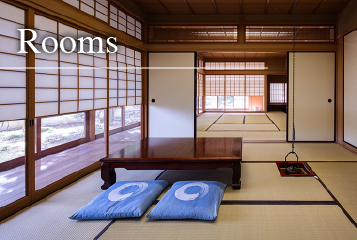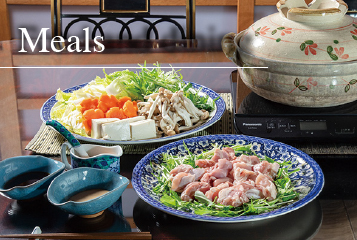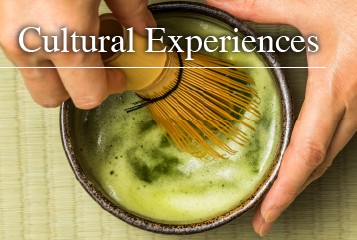About Villa Retreat
A rural mansion where the four seasons' breaths
<Host-resident private lodging> English-speaking available
A spacious traditional Japanese residence with a site area of 10,000 m2 and a main house of 400 m2 was renovated and opened as the first private lodging facility in the area on April 1, 2025. Located in the mountains on the border of Osaka, Kyoto, and Hyogo prefectures, it is not convenient, but it still has beautiful nature in all four seasons, traditional Japanese lifestyles, and coexistence with animals, which are important things that cannot be found in the city. We offer carefully selected Japanese cuisine, such as fresh vegetables from the fields, mizutaki made with fresh chicken purchased directly from producers, and sukiyaki made with Tamba beef. Ibakita Park, which features Japan's longest suspension bridge and bungee jumping, has opened nearby.
Enjoy a peaceful stay at Villa Retreat, where you can experience living in harmony with nature and true country living.

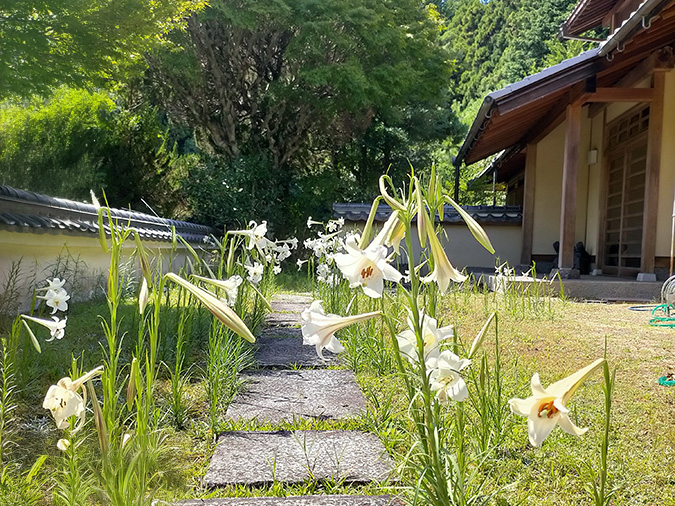
History of the facility and agriculture
History
At the entrance to the local Misayama Community Center, there is a monument commemorating Oue's virtue. There was once a man of great achievements named Oue Keiji (1882-1942). He was the man to introducing a National Health Insurance System to the village, and after the war, he introduced improved toilets to the area to eradicate parasites, laying the foundation for self-governance through discussion. Villa Retreat is where Oue Keiji used to live. His son-in-law, the former president of RICOH, took over the house, and the building was later remodeled into a beautiful traditional Japanese house with an emphasis on wood.
Living in nature is not easy. However, there are people who are somehow fascinated and determined to live here in Satoyama. We hope to provide a stay that will give you an opportunity to think about the true richness that lies in the midst of inconvenience.

A book about Keiji Oue and his top hat
Agriculture
Water naturally flows from the mountain behind the property and accumulates in an artificial pond, which then flows into the field below. The design of the field (when and where to plant) is important. The design takes into consideration sunlight, drainage, and continuous crop failure. For example, carrots, radishes, coriander, cucumbers, and other vegetables that grow in wetlands are planted near the pond, while peppers, which do well in dry conditions, are planted further away, and potatoes, shiso leaves, and green onions are planted on the west side, where the shade falls quickly. Crops are grown for three months to a year after sowing and planting before they can be harvested. They are carefully grown, with constant observation to see if they are affected with insects or diseases. At Villa Retreat, all crops are grown without pesticides. They are sold at the Ibaraki Agricultural Cooperative Association's sales floor, MISHIMAKAN.
The freshly picked harvests are exceptionally delicious, and smiles abound in joy at met the hard work rewarded.
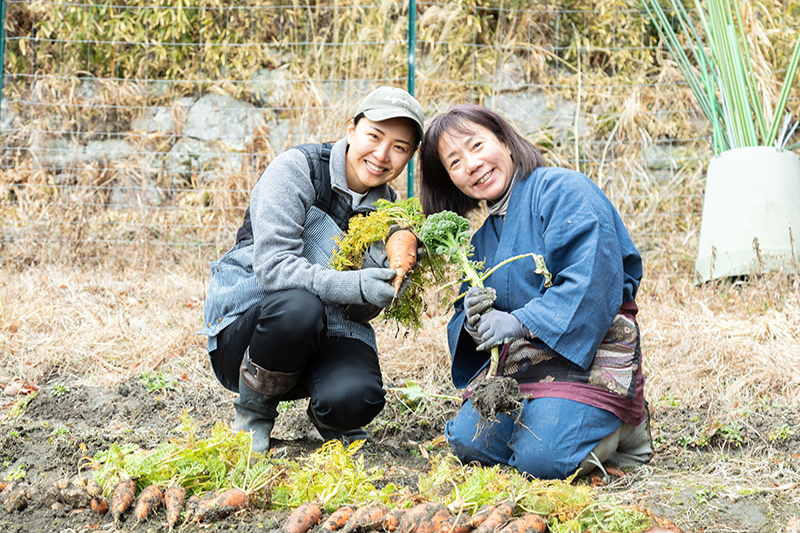
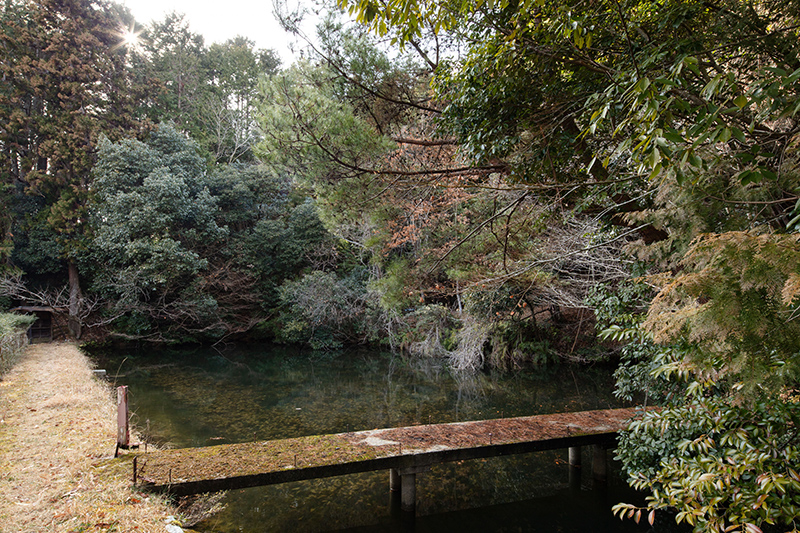
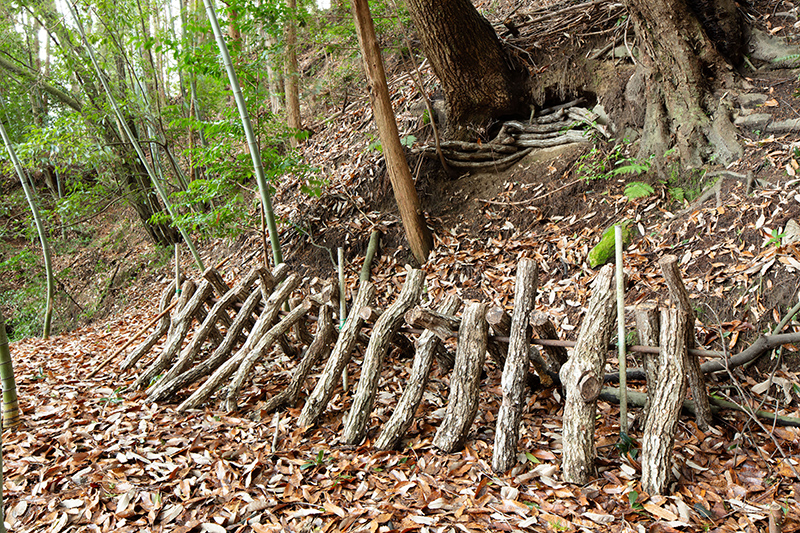
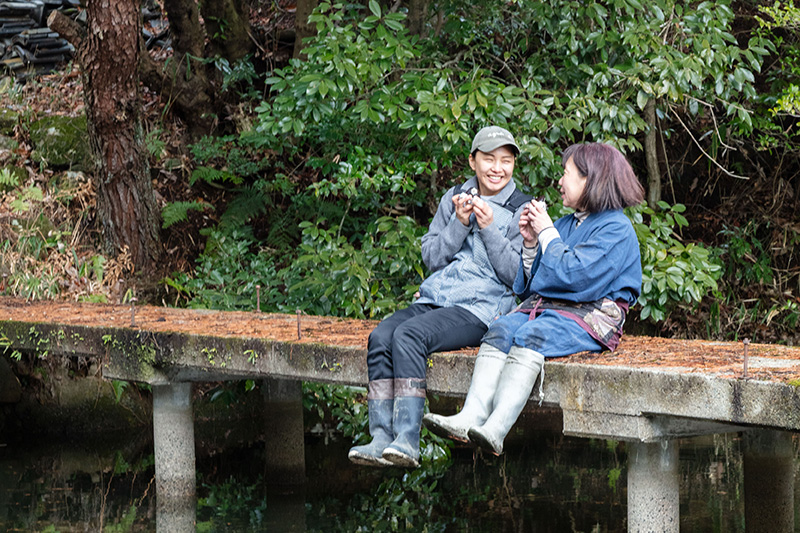
Greetings
In Japan, there is the teaching of "mind and body as one," which holds that the mind and body are inseparable, and the teaching of "preventing illness," which maintains harmony between the mind and body and cultivates the innate "will to live."
On April 1, 2025, I decided to open a private lodging based on the idea of oneness of mind and body, and exploring health, happiness, and living in harmony with nature.
Our concept is "A place for everyone." Thank you for your support.
Mizuho Sugibayashi
Representative of GOZU10

Homeowner Profile
Biography
- Mukogawa Women's University School of Pharmacy, United States Graduate School of Public Health
(Tulene University the School of Public Health and Tropical Medicine, Harvard University School of Public Health) - In Japan, I worked at Santen Pharmaceuticals and the Department of Future Medical Development at Osaka University Hospital.
- Overseas, I was dispatched by JICA (Japan International Cooperation Agency) to serve as Pharmacy Director at West Gonja Hospital in the Republic of Ghana, Coordinator of Polio Eradication in the Vaccination Division of the Ministry of Health of Bangladesh, and Planning Researcher at the JICA Office in the Republic of Uganda.
- Returned to Japan in 2009 and aimed to become semi-self-sufficient. Purchased the place where I currently live, and started living. While working as a pharmacist, I also works in agriculture (Ibaraki JA) and real estate rental business.
Paper
- "Evaluation of Training in Newborn and Child Health Care in Africa" (Medical Journal: Osaka Prefectural Medical Center for Maternal and Child Health, Vol. 27, No. 1, 2011)
- "Japan's Assistance to the Health Sector in the Republic of Uganda" (The Journal of the Japan Pharmaceutical Association, April issue, Vol. 61, p. 62-63) April 2009
- Collaborator in the "Research on the Future of Health, Labor and Welfare Science Research Funds - Research on Epidemiology and Clinical Research" project, a part of the Ministry of Health, Labor and Welfare Science Special Research Program "Research on the Future of Health, Labor and Welfare Science Research Funds" (Researcher in the Department of Epidemiology, Graduate School of Comprehensive Human Sciences, University of Tsukuba) (Ministry of Health, Labor and Welfare Science Research Results Database File List 2006060617A0001), April 2007
- "Young Volunteer Power" (JICA Frontier, June 2001 issue (volume 23), p. 23, published by the Japan International Cooperation Agency) June 2001
- "Making the local foods Banku and Kenkey in Ghana" (KYOTO Global Youth: Green and Cultural Overseas Communications, Vol. 3, Spring 1994, p. 10-11, published by Kyoto Prefecture) March 1994
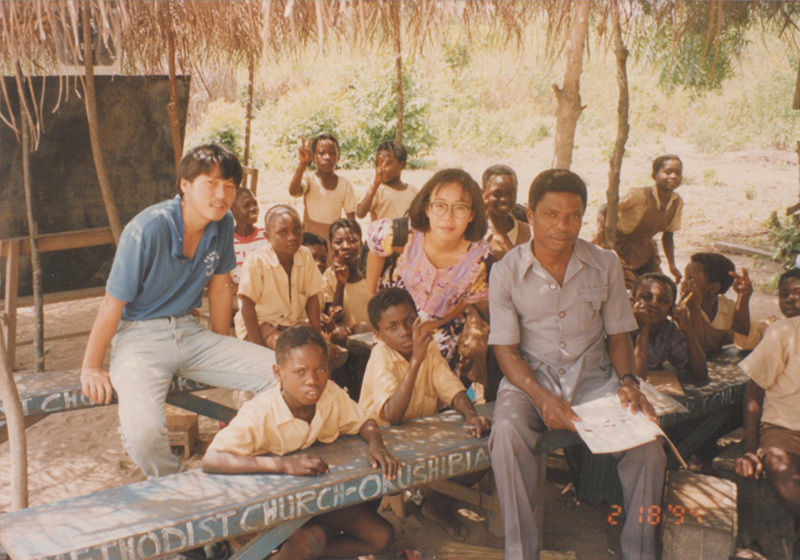
A photo of a visit to an elementary school during my posting in Ghana in 1994
Access
Villa Retreat
2-1, Kamiotowa, Ibaraki City, Osaka, 568-0086, JAPAN
Free parking available (in the garage with shutter, and open-air parking) for up to 10 cars total


